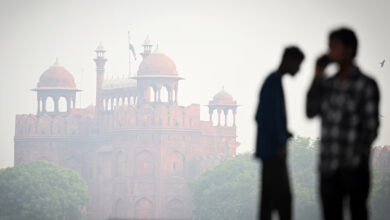People from different religious backgrounds living side by side has been a challenge in Egypt, as well as many places, for ages.
In India, Europe and the US so-called multifaith spaces have had some success creating shared spaces where people can practice whichever belief they have together.
One type of multifaith space is a room in a public building such as an airport or university, where people of any denomination who want to pray when they are in such a place can do so.
“Multifaith spaces include spaces with a remarkable variety of names like room of silence, meditation room, prayer room, the hub, chapel and many others. This diversity of names is an indication of the differences in approach, purpose and usage,” Ralf Brand, a PhD in community and regional planning, says. Brand is currently directing a research project on multifaith spaces and how they work as expressions of the interface between religious and secular worldviews.
Apart from places created for convenience, there are also examples of actual venues, far fewer in number, built in communities specifically for this purpose. They attract people with an affinity for multifaith ideas or an interest in interfaith dialogue, and can create communities or congregations.
An example of this type of space is the Baha’i House of Worship in India, where no idols are worshipped and no rituals performed. At designated hours each day there are prayer services in which prayers and writings from the holy texts of all major faiths are read or recited. Around 4 million people from different religious and national backgrounds visit the House of Worship each year. According to Shatrughun Jiwnani, its spokesperson, visitors appreciate the opportunity to practise their different religions in shared surroundings.
”The Baha’i House of Worship has become an exceptionally attractive holy place for individuals coming from different religious backgrounds. Visitors seem to appreciate the practice of their worship of the One God in a setting that is inclusive and unifying of all people,” Jiwnani says.
But such a place is not easily exportable. Egyptian experts on religion say it could be difficult to set up such a space in Egypt.
“In India, Muslims as well as Hindus and Buddhists are very spiritual in their approach to religion. I think we see our religious identity more as who we are. We believe in one God and that our God is the only god,” Amr A. Saleh, who is doing his masters on comparative religious studies at Al-Azhar University, says. “Monotheism is the most important part of Islam here.”
Saleh says praying to God in the same room as non-Muslims could raise serious questions regarding the concept of the God being addressed in the shared prayer.
Jean Druel, a Dominican priest who studies Islamic linguistics in Cairo, agrees that the concept of the Baha'i House of Worship might not be transferrable to Egyptian communities.
“Christians as well as Muslims are very territorial in their approach to religion,” Druel says. “So they’ll say, ‘This is a Muslim place or this is a Christian place,’ and feel unwelcome if it’s not a place belonging to their own religion.”
Saleh and Druel both doubt that Muslims and Christians would go to a multifaith space if there is also a mosque or church available. This is perhaps true of many people of different religions all over the world.
But according to the studies Brand is doing on the subject, some form of multifaith space could stand a chance anywhere, provided it is not over or under ambitious. “But a successful multifaith space has to be very responsive to local contexts,” he says.
Prayer times aside, Saleh finds the idea of a meeting point where people from all religions can sit and talk together and get rid of prejudices a "brilliant idea," and he says he really thinks Egypt needs a space where people can achieve better understanding of their fellow citizens.
“Sharing our prayer for God would be focusing on the one thing we don’t have in common. But just as Indians have things in common regardless of their religion, so do we. Let’s focus on that,” he says. “We have values in common, such as the respect for marriage, and we have shared problems, such as discrimination from public employment. Let’s gather around that.”
The History of Multi Faith Spaces (source: Ralf Brand)
Aside from centuries-old cases in Asia where ‘only’ two religions were practised in the same room, these are the milestones of modern Multi Faith Spaces.
1893: Parliament of the World's Religions in Chicago: The first formal interreligious dialogue took place.
1918-1939: Allegedly, US Army Chapels started to be shared among Protestants, Catholics and Jews.
1950: The United Nations headquarters opened in New York with a small meditation room – redone in 1957.
1988: As far as we know the first multifaith space opened in an airport (Vienna).
2001: The 9/11 attacks and riots in the UK raised awareness for 'community cohesion' and the need to integrate – especially Muslims – better into western societies. Since then a number of relevant equality laws were passed in the UK.




